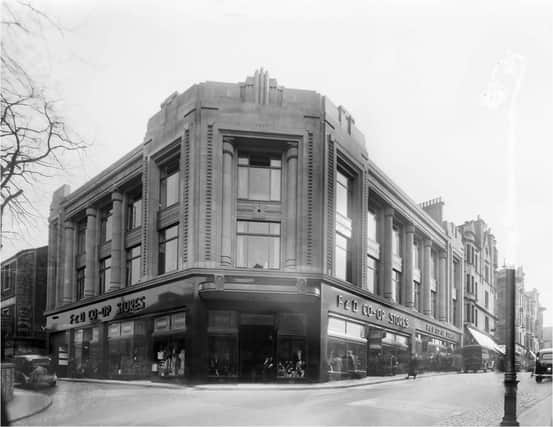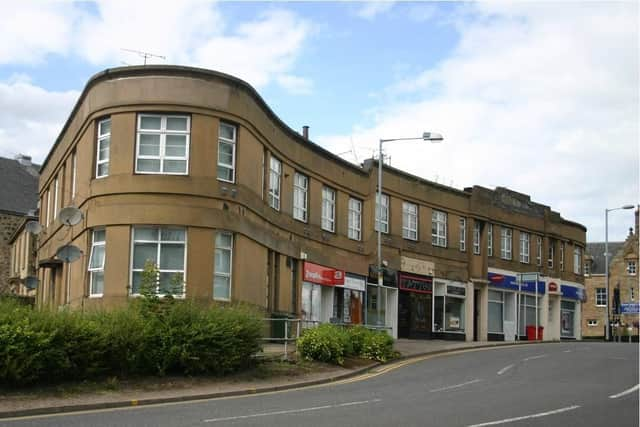Looking back with Ian Scott at Falkirk's Art Deco former Co-op Superstore


It is of course the fantastic Art Deco building which stands at the junction of Bank Street and Vicar Street and began life in 1938 as the Co-op Superstore.
In the aftermath of World War I people wanted to turn away from the horrors of the past and look towards a brighter, different future. All across the country a wave of new design ideas began to change the look of cities and towns and Falkirk was no different. Whenever an opportunity arose architects looked to this Art Deco inspiration creating buildings using new materials and decorative features influenced by various cultures, scientific advances and new construction techniques. The opening of the new Infirmary in Gartcows and the Bus Station in the 1930s led to a number of commissions including the serpentine “sausage” building at the top of Cockburn Street (Kidd’s Buildings) and the new Callendar Riggs. Falkirk architect James G Callander was the undoubted star of the period and examples of his work are all over the town including the range of shops in front of the Bus Station. Another new street which eased the bus traffic through the town was opened in 1933 by the Prince of Wales and hence “Prince’s Street” has the new Super Cinema, now Sportsters Bar, with its sweeping lines echoing the great ocean liners of the period.
Advertisement
Hide AdAdvertisement
Hide AdBut without a doubt J G Callander’s piece de resistance was, and remains, the Super Store. Falkirk and District Co-op was at the height of its considerable power and the decision to combine several outlets into one town centre site was a bold and and expensive initiative. There was nothing like it in the area with its Egyptian features, decorative columns, polished sandstone surfaces, bronze framed windows and acres of plate glass. State of the art facilities filled the huge shopping areas which covered three floors which were accessed by lifts for goods and customers – the first in any Falkirk store. Many folk will also remember the amazing devices which whisked the rolls of pound notes through the store in tubes linking the sales desks with the accounts office.


The building was opened on March 12, 1938 nearly four years after the work started and over 1000 people gathered to watch the architect present the Co-op Chairman, Mr Murray, with a gold key with which he opened the door. Several policemen were on hand to manage the crowds as they flocked in for whatever bargains were on offer. In the end the work cost £70,000 (over £5milion at today’s prices) and it went on to serve until the 1980s before a new life as a bank.
But the shadows of war were gathering and once again a second peace brought another fresh approach to architecture and design. The age of Art Deco gave way to the brutal concrete and glass monstrosities which ruined so much of our built environment. Thankfully most of the 1930s developments have survived and the Co-op Superstore, the last great building erected in the town, stands as a precious reminder of how such genius can make our daily lives that bit more pleasant.